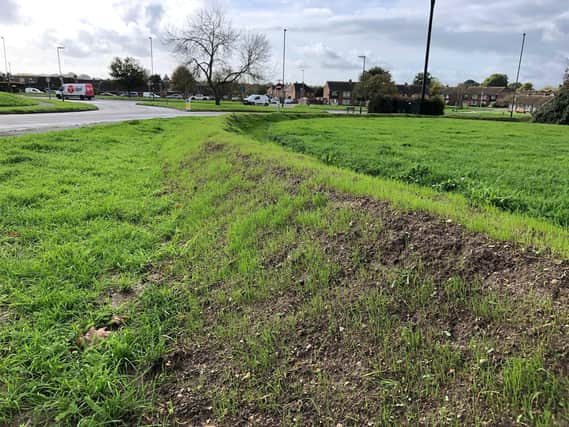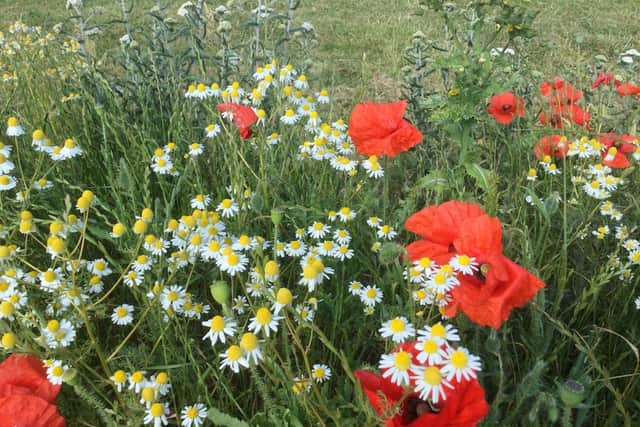No Mow May: an enchanting wildflower wonder on the outskirts of Chichester


When a friend said we should come and see the daisies and poppies ‘and some other things’ that had popped up on her estate, we had no idea what an amazing eruption of wildflowers awaited us! For hundreds of metres around the great open space of East Broyle’s village green are winding banks of corn chamomile studded with scarlet poppies and swathes of high waving stems of wild mustard.
The estate is only ten minutes’ or so walk beyond Northgate but it feels like the countryside has moved right in. The message at Chelsea Flower Show this year was: Encourage your wildflowers, see what miracles happen when Nature is given a chance. Well, East Broyle is right on-trend. Those daisies and poppies are what first catch the eye, but a closer look reveals a whole host of other beauties, large and small. We recognised red and white campions, some pretty mauve cut-leaved geraniums, the little white stars of lesser stitchwort creeping among yellow bobbles of black medick, trefoils and teasels, clover and yarrow ... the list goes on. Most exciting were spires of weld, used as a natural yellow dye, and the beautiful pink-purple corncockle, once a common sight in arable fields but now virtually extinct in many parts of the country.
Advertisement
Hide AdAdvertisement
Hide AdWhere did they come from? How did all this happen? Last autumn tonnes of earth were brought in to build protective banks, known as bunds, around the East Broyle village green. They were sown with grass seed, and that was that – or so the residents thought. The past few weeks, though, have seen the plain green bunds transformed by a succession of wildflowers bringing colour and scent (breathe in and think of chamomile tea), attracting bees and butterflies and a host of other winged and creeping wildlife. All these flower seeds were lying dormant in the imported soil but now their chance has come!


The poppies will soon be gone – may already have faded by the time you read this – but other plants will bloom on until the autumn. Several different thistles are on the verge of flowering. Thistles often get such a bad press, but they are incredibly valuable in providing food and home for many varieties of moths, beetles and vital pollinating insects such as hoverflies and bees. Later in the season, seed-loving birds will make their move; they love thistle seeds. We spotted young teasels, too, whose heads should be irresistible to flocks of goldfinches in the autumn.
Next year will be different. Some perennials will establish themselves, some annuals will scatter their seed, either directly or with the help of birds, bullies will crowd out more delicate species but new arrivals will show their heads. The bunds of East Broyle were created for practical purposes – their beauty is a totally unexpected bonus, and it will be fascinating to see their displays in years to come.